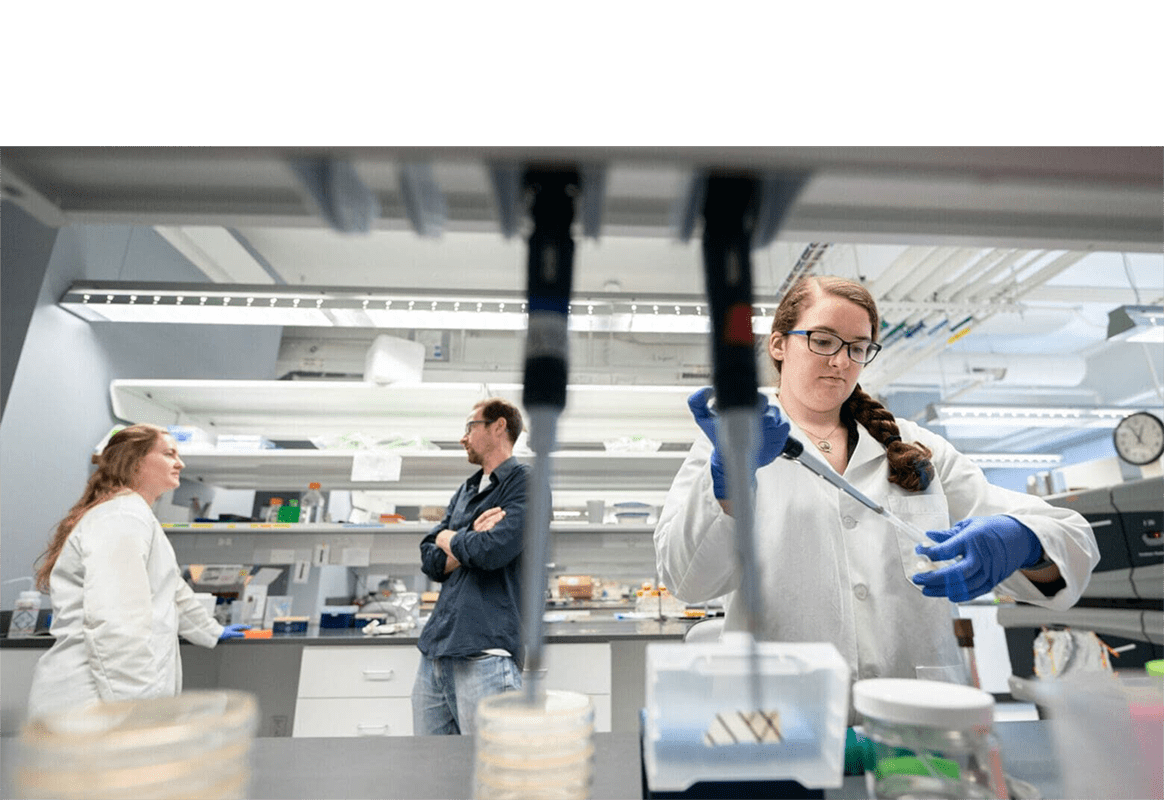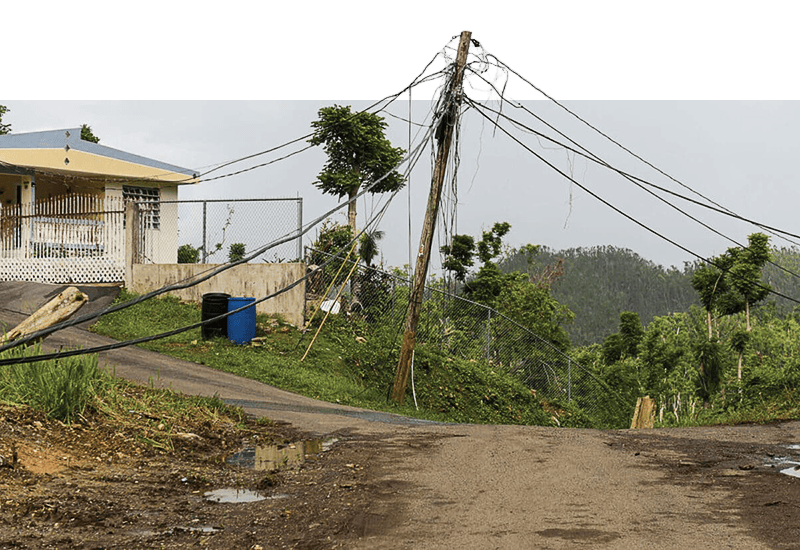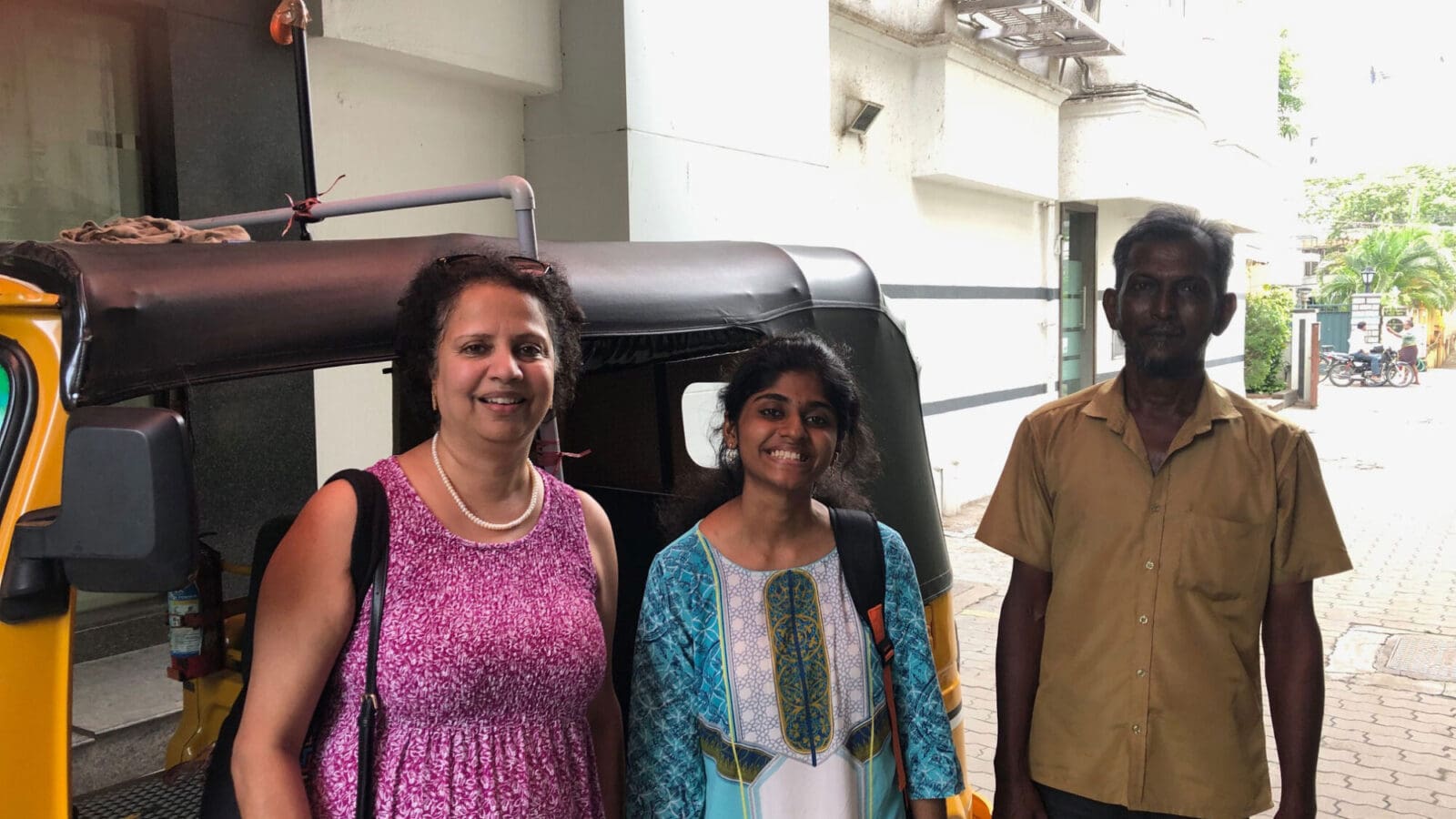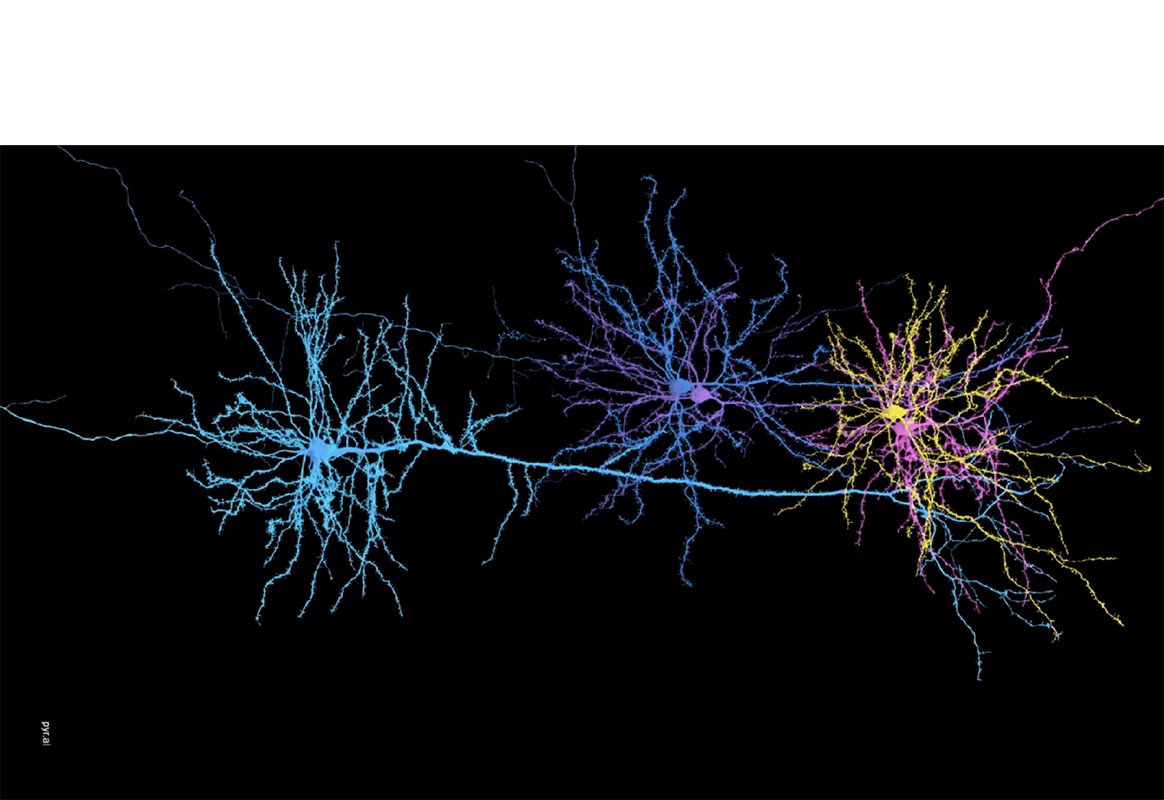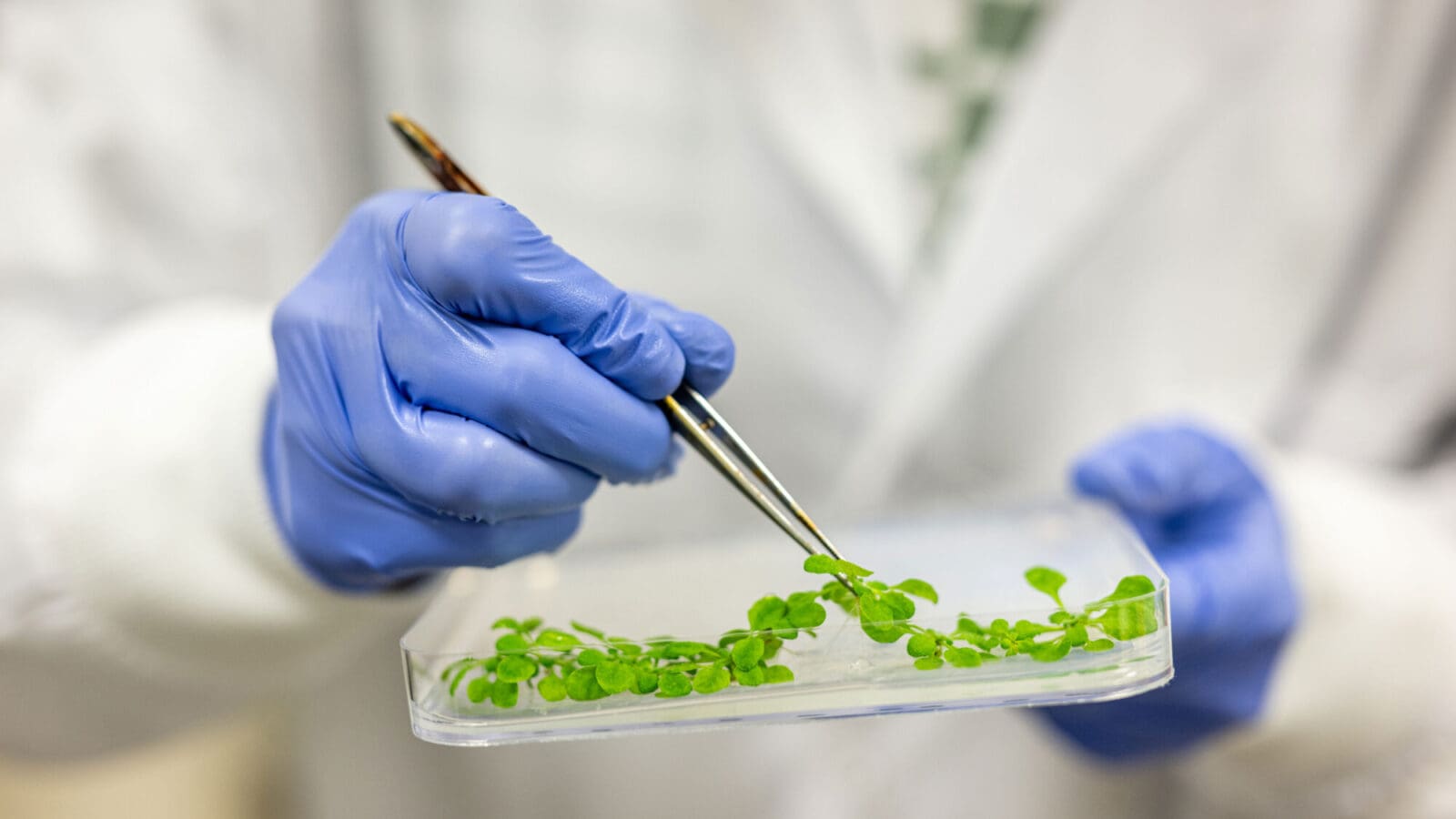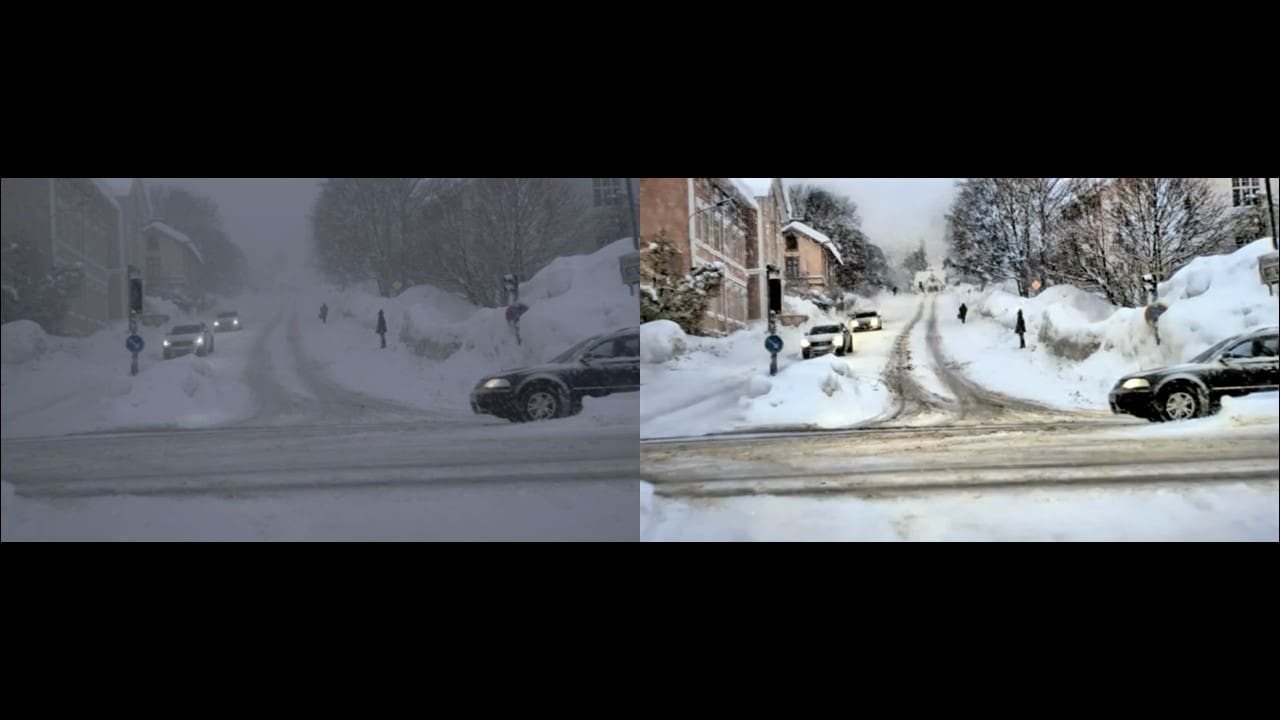
Metropolis Project backs solutions for safer, more resilient cities
By
on
The Metropolis Project aims to advance technological innovations that will make cities more sustainable, resilient, livable and equitable. Anchored in the School of Engineering and Applied Science, the project connects engineering faculty and students with researchers in earth sciences, architecture, social sciences and humanities to work toward solutions for the most pressing problems that will face future cities.
“Instead of passively responding to how technology is changing the world around us, the big aim of the Metropolis Project is to make this a proactive role,” said Elie Bou-Zeid, the project’s director and a professor of civil and environmental engineering.
Launched in 2019, the project has funded collaborative research by faculty from several engineering departments and the School of Architecture. Now, it is expanding to support work initiated by graduate students, and seeking to bring in more researchers from public policy, economics and other areas — especially through in-person convenings, which Bou-Zeid hopes to resume this fall.
Research funded by the project often uses Princeton’s campus as a living laboratory for new urban technologies.
“The campus looks like a little neighborhood in a city,” said Bou-Zeid. “Being able to use the campus is priceless in terms of speeding up the technological work, having controlled conditions that lead to useful results — and eventually working with [the University’s Facilities Organization] to improve the sustainability, livability, equity and resilience of the campus itself.”
Seeing through fog and snow
One of this year’s grants is supporting work led by Felix Heide, an assistant professor of computer science, to improve the imaging and computer vision capabilities of sensors for autonomous vehicles. Existing systems for driverless cars rely heavily on lidar, which uses laser beams to detect objects in the environment. Lidar and other current imaging systems perform poorly in snow, fog, rain and nighttime conditions, which is a major hurdle to their wide adoption — especially for transportation into cities from outlying areas, which will have less support infrastructure for driverless vehicles.
Using a test vehicle from Mercedes-Benz, a partner on the project, Heide’s team will collect data from sensors during varied weather conditions in Princeton and New York City, and create physical simulations based on this data. Using machine learning and optimization methods, they will develop systems enabling suites of sensors to dynamically adapt their activities based on changing conditions.
“Today, we don’t have the sensors and the vision capabilities that allow us to tackle these [lower-visibility] conditions. While we as human drivers are able to do these complex tasks, the ‘brain’ of the autonomous vehicles of today is not capable of doing that,” said Heide. Their dependence on lidar means that “in fog or snow they are completely blind. So, the next big frontier is to make these systems work with cheap sensors, effectively, in harsh conditions.”
How cities move pollutants
Luc Deike, an assistant professor of mechanical and aerospace engineering and the High Meadows Environmental Institute, will lead a study to determine how skyscrapers, stadiums and other urban structures influence the transport of pollutants and ocean spray across cities. While the motions of particles in the lower atmosphere have been well studied, current simulations do not account for the effects of cities’ complex terrain on these patterns. Deike’s team will conduct wind tunnel studies and develop models of particle transport in urban environments, which can inform design strategies to improve air quality.
Giant, hurricane-proof umbrellas
As part of the Office of Sustainability’s Campus as Lab program, civil and environmental engineering professors Maria Garlock and Branko Glišić plan to construct and test prototypes of dual-purpose kinetic umbrellas that could serve as both sunshades and storm shields along coastlines. Their team has used computational modeling and lab experiments to test the structures’ ability to withstand hurricane-force waves and wind and prevent flooding. With support from the Metropolis Project, the researchers will construct quarter-scale prototypes of the umbrellas at the Forbes College garden, where they will evaluate the umbrellas’ performance under gravity loads, wind loads and temperature changes, and use structural health monitoring techniques to assess durability.
Amped-up solar windows
This year, the Metropolis Project established the Julis Romo Rabinowitz Graduate Fellowship to support upper-level Ph.D. students expanding their research to the testing and implementation of new technologies related to the urban environment. The first fellowship was awarded to Tianran Liu, a graduate student in electrical and computer engineering. The project also awarded a research grant to Ph.D. student Avantika Gori in civil and environmental engineering.
Liu is developing transparent photovoltaic materials that can harvest solar energy while embedded in the windows of buildings or vehicles. His adviser, chemical and biological engineering professor Yueh-Lin (Lynn) Loo, and her research group have previously investigated organic solar cells that can power smart windows to darken and lighten for lighting and temperature regulation. But these organic light-absorbing materials can be fragile during manufacturing and have limited operational lifetimes.
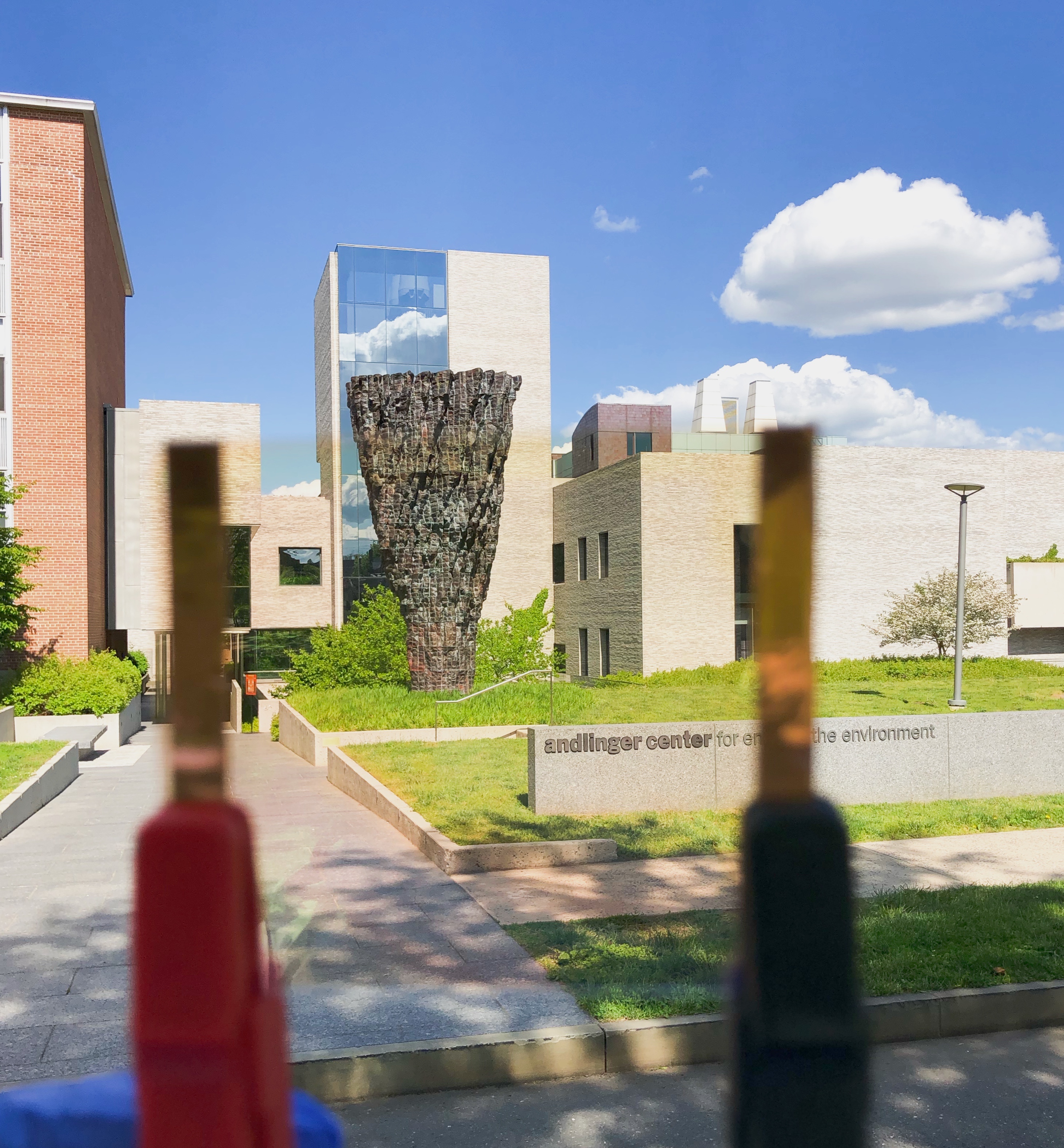
Electrical and computer engineering graduate student Tianran Liu led the creation of a prototype transparent solar cell that uses new materials called inorganic metal halide perovskites — shown here in front of Princeton’s Andlinger Center for Energy and the Environment. Copper tape and clamps are visible at the left and right edges of the solar cell. Tianran Liu
Liu led the creation of a prototype transparent solar cell that uses new materials called inorganic metal halide perovskites, which are far more stable and long-lasting than their previously reported organic counterparts. Support from the Metropolis Project will allow him to scale up the device for better integration with windows, as well as increase its voltage output.
“Transparent solar cells are unique — they have a big potential to electrify transparent surfaces on buildings and vehicles without impacting aesthetics,” said Liu. The solar cells could provide point-of-use power for smart windows as well as connected sensors that monitor and dynamically control indoor lighting and temperature conditions, thus reducing a building’s energy consumption by up to 40%, he said.
Hurricane hazard warnings
Gori is creating a new hazard prediction system for tropical cyclones and hurricanes impacting cities along the U.S. East and Gulf Coasts. While current prediction systems focus on storm surge flooding, Gori will integrate models for rainfall and wind strength, building on previous work by her adviser Ning Lin, an associate professor of civil and environmental engineering. This local, real-time early warning system could help preserve lives and property by improving emergency planning and evacuation decisions.
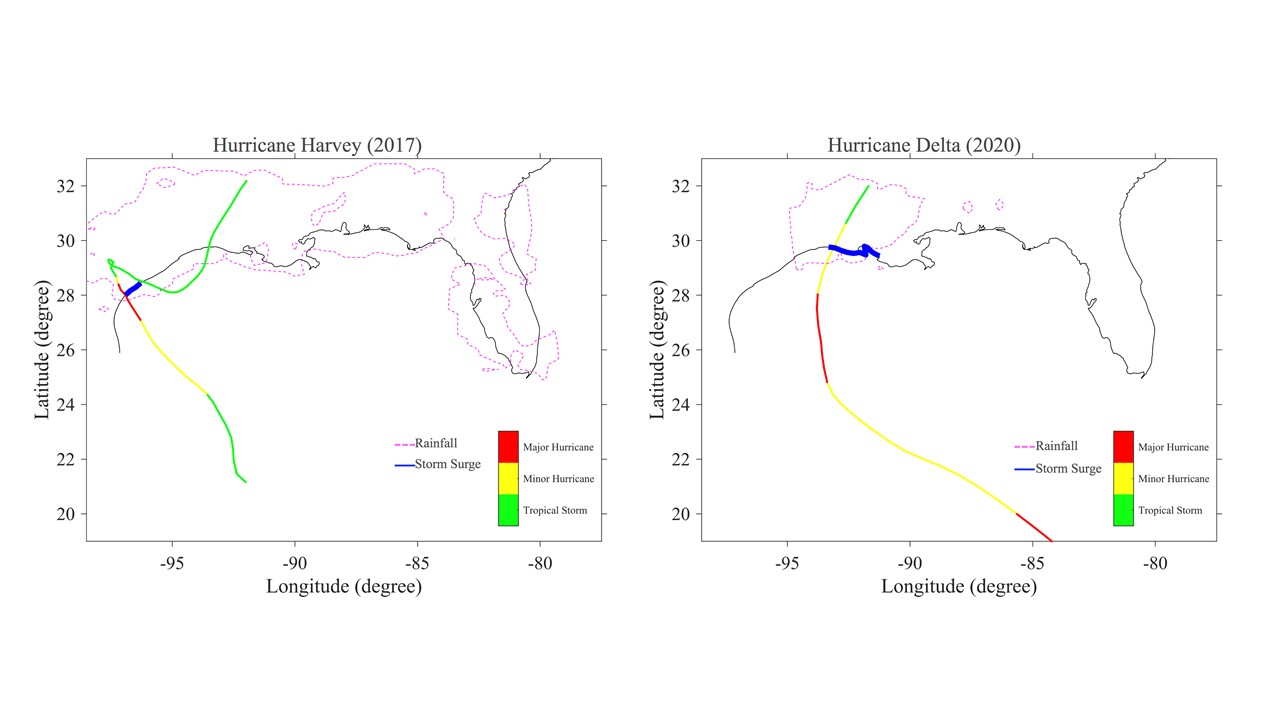
Civil and environmental engineering graduate student Avantika Gori is creating a new hazard prediction system for tropical cyclones and hurricanes impacting cities along the U.S. East and Gulf Coasts. While current prediction systems focus on storm surge flooding, Gori will integrate models for rainfall and wind strength. The maps above show the locations impacted by rainfall (pink dotted lines) and storm surge (solid blue lines) during Hurricanes Harvey and Delta. Avantika Gori
“Looking at historical tropical cyclones, we saw that you can have a varied combination of rainfall, storm surge and wind, and all three of those hazards can occur at the same place and the same time in varying severity levels,” said Gori. “We wanted to develop a system that would take into account all of these hazards together and provide a more comprehensive picture of the risk at different coastal locations.”
Gori plans to deploy a version of the warning system by late summer of this year, just as the Atlantic storm season heats up. She will also use models developed during her early graduate work to create a prototype system for detailed, 30-meter (98-foot) resolution flood forecasting maps of Wilmington, North Carolina, a community that has experienced severe storm flooding in recent years.
The Metropolis Project is supported by the Julis-Rabinowitz Metropolis Project Fund and the School of Engineering and Applied Science.
